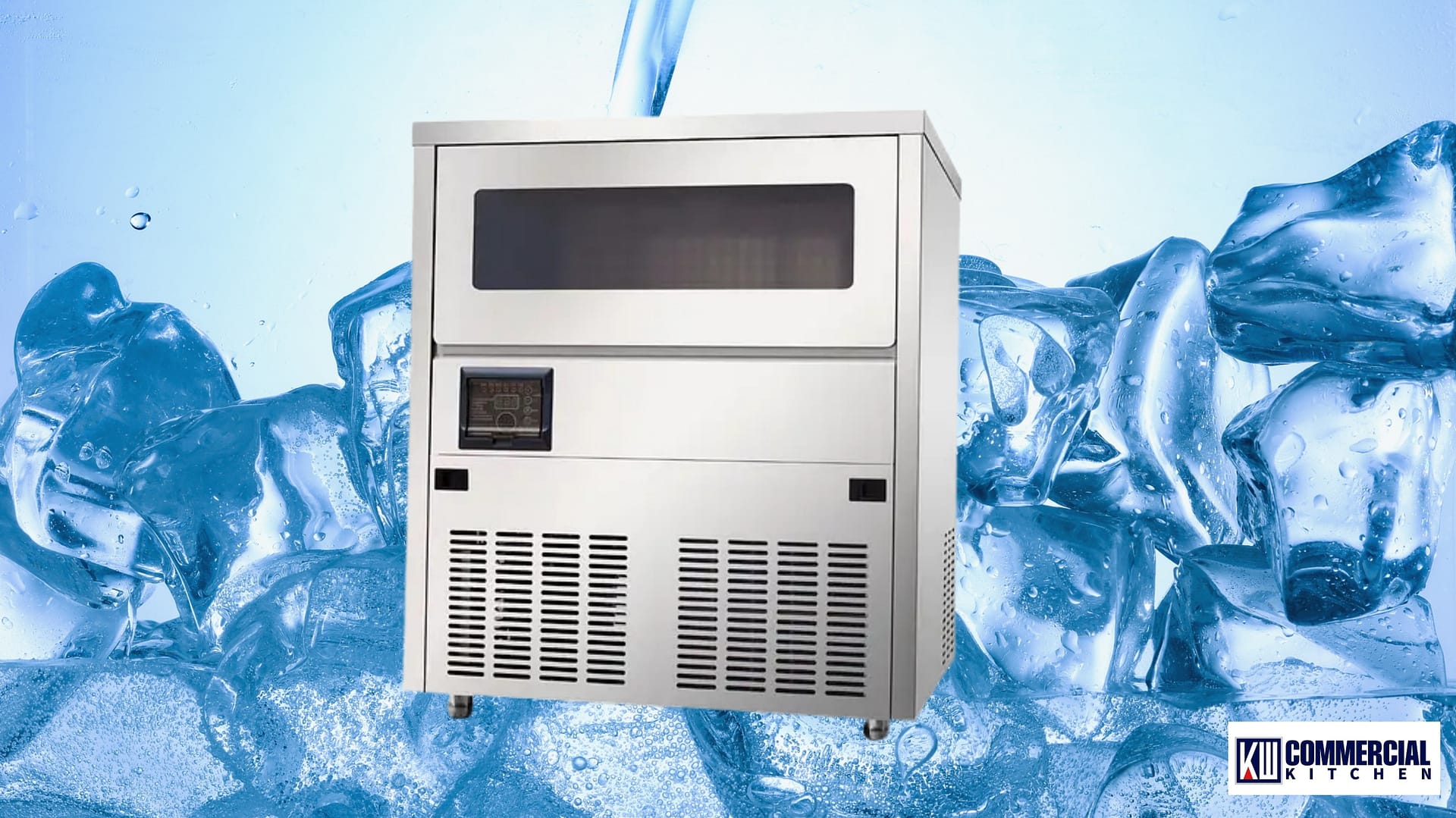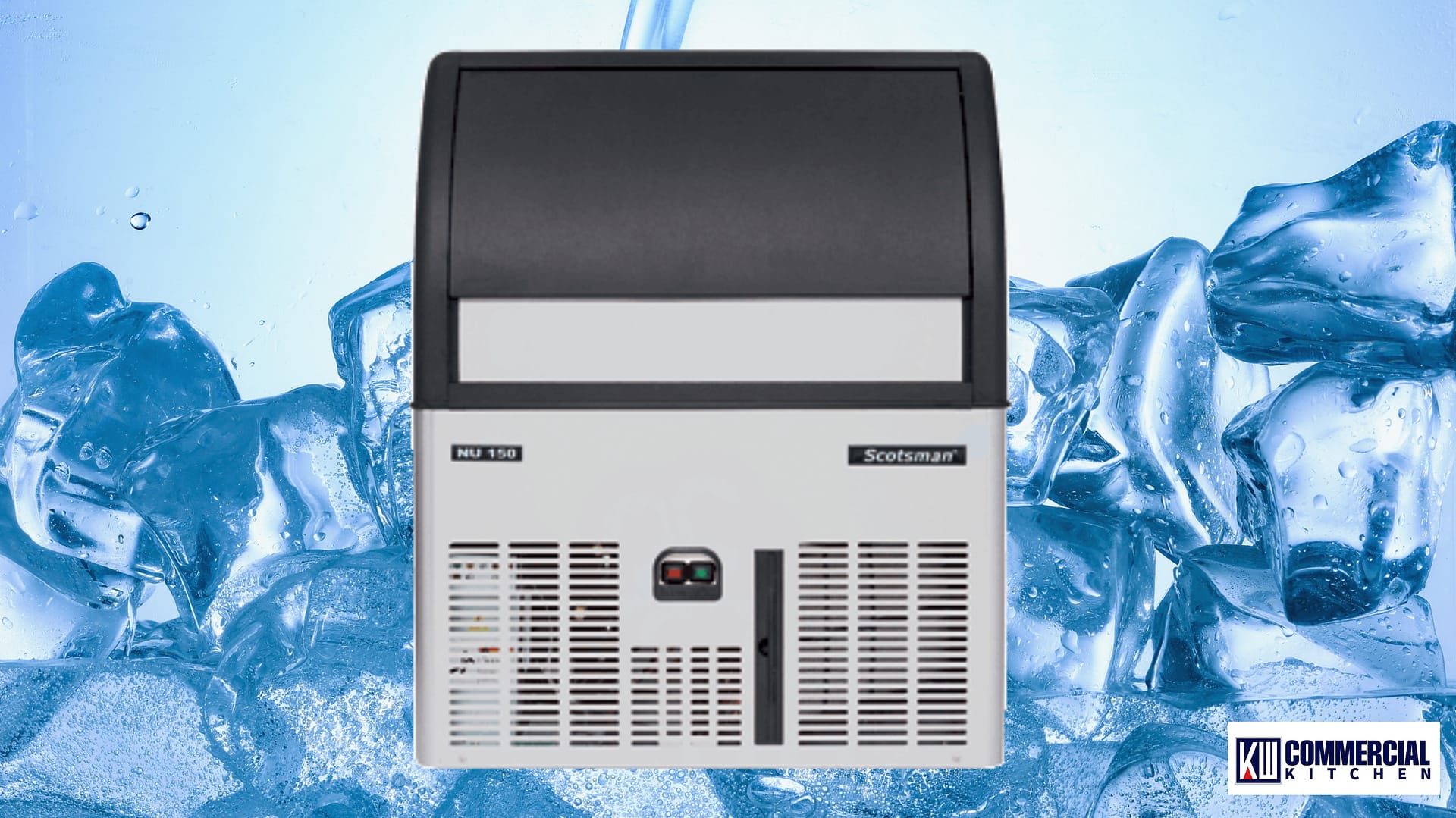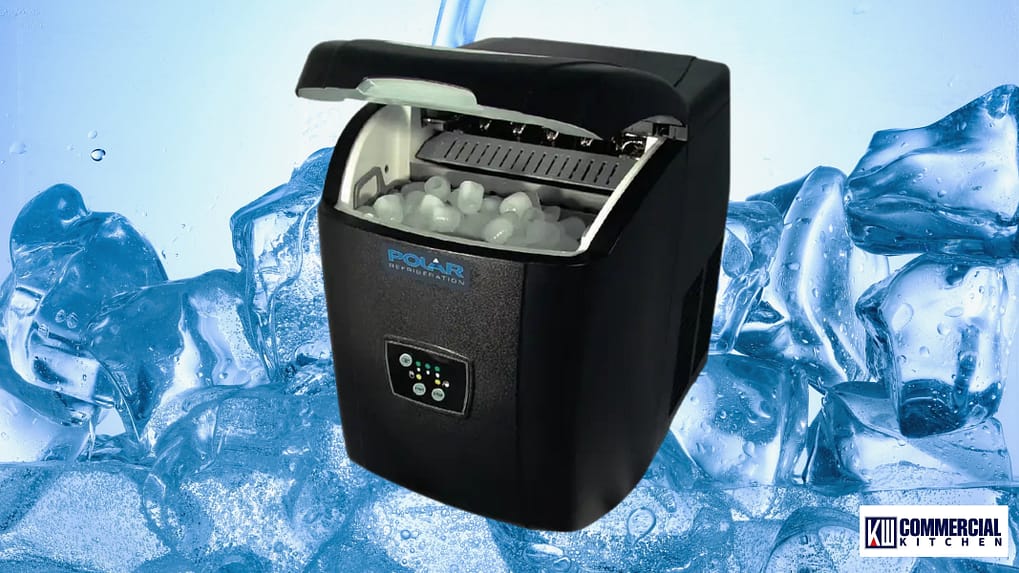Ice Machines in Australia: Sizing, Water Quality & Hygiene Checklists
This guide gives you a repeatable sizing method, shows how ambient and inlet‑water temperature change production, explains water treatment choices, and provides FSANZ‑aligned hygiene routines. You’ll also learn the key features that lower your total cost of ownership.
TL;DR — the short answer (70–100 words)
Choose self‑contained for compact sites and modular + bin for higher demand or future growth. Size from your peak drinks × grams per serve, add a 15–30% buffer, then verify the model’s hot‑day output (higher ambient and inlet‑water temperature). Match ice style to the menu: cubes for mixed drinks, nugget for fountain/blended, flake for seafood and rapid chilling. Ice is food — use potable water, dedicated scoops and a logged sanitising routine. Protect output and taste with filtration + scale control.
Who this guide helps (and how to use it)
Owners and managers in cafés, bars, QSRs, seafood retail, healthcare and convenience. Work through the types and styles, run the sizing method (with the calculator), check hot‑day output, then finalise water treatment and hygiene routines.
Ice machine types & best‑fit use cases
| Type | What it is | Typical capacity band | Strengths | Watch‑outs | Quick link |
|---|---|---|---|---|---|
| Self‑contained | Maker + small bin in one cabinet (often undercounter) | ~20–120 kg/day | Compact, simple install, ideal for cafés and small bars | Limited storage; more sensitive to room heat | Self‑Contained Ice Makers |
| Modular + bin | Ice head sits on a separate storage bin | ~130–1000 kg/day | Scalable output; large storage; easier to service | Needs vertical clearance; must choose the right bin | Modular Ice Makers |
| Undercounter (low‑profile) | Self‑contained unit at bench height | ~20–60 kg/day | Fits tight spaces; convenient for FOH | Lower output; plan around ambient & ventilation | Self‑Contained Ice Makers |
Ice styles, usage & cost impact
| Ice style | Best for | Usage / cost impact (practical notes) |
|---|---|---|
| Full/half cube (dice) | Mixed drinks, spirits, general drinks service | Heavier per cup at the same fill line → more grams per serve; slower melt improves dilution control. |
| Nugget (chewable) | Fountain drinks, blended drinks, healthcare | Irregular shape + micro‑voids increase displacement (appears fuller), often reducing grams per drink at a given fill line. Customer‑preferred chew. |
| Flake | Seafood display, rapid chilling, smoothie base | High surface area → faster melt. For displays, plan a top‑up rate through service, which increases daily production needs. |
Blended‑drink synergy — Nugget/flake ice can shorten blend time and reduce motor load, helping protect jar blades on high‑performance blenders. See Hamilton Beach Commercial.
- Tare your usual cup on a scale.
- Fill to the service line with a chosen ice style.
- Weigh the ice (grams). Repeat for each style and cup size.
- Use these actual grams/serve in the sizing calculator below.
Sizing method (with worked example & calculator)
Step‑by‑step
- Map demand drivers: drinks per hour at peak, cocktails vs soft drinks, blended drinks, ice buckets, food prep, seafood display.
- Set grams per serve: use your Cup Test for each glass size and ice style.
- Daily requirement:
Daily kg = (Drinks/hour × g/serve × Peak hours ÷ 1000) + other uses (kg). - Add buffer: +15–30% to cover spillage, weekends and seasonal spikes.
- Choose storage: pick a bin that covers your largest peak‑hour draw while the head refills.
- Confirm hot‑day output: always check production at higher ambient & water temperatures (see chart).
Ice demand calculator (enter your own numbers)
Venue‑type starting points (replace with your Cup Test numbers)
| Venue | Drivers | Pattern to model | Suggested class |
|---|---|---|---|
| Café | Iced coffee/tea, smoothies | 80–200 drinks/day; nugget or flake possible | Self‑contained 40–80 kg/day or modular 100–150 kg/day |
| Cocktail bar | Shaken/stirred, rocks | Intense peaks; cube clarity important | Modular 150–300 kg/day + matched bin |
| QSR | Fountain drinks | High drinks/hour; nugget preferred | Modular 130–250 kg/day |
| Seafood display | Bed & top‑ups | Continuous top‑up rate during service | Flake/nugget modular 150–400 kg/day |
| Healthcare | Hydration, ice packs | Steady all‑day | Nugget self‑contained 40–90 kg/day or modular 130 kg/day |

Ambient & inlet‑water temperature (production derating)
Manufacturers typically publish outputs at two conditions, e.g. 21 °C ambient / 10 °C water (laboratory) and 32 °C ambient / 21 °C water (hot day). Always size your machine off the hot‑day figure for Australian summers or warm plant‑rooms.
Illustrative chart — normalised output vs ambient
Protect capacity with good siting
- Keep intakes and exhausts clear; avoid confined alcoves.
- Do not place beside fryers/ovens or in direct sun.
- Follow the manufacturer’s minimum clearances.
Air‑cooled vs water‑cooled
Air‑cooled units are common in Australia. Water‑cooled may be used where permitted and economical — check local requirements and water costs.
Water quality & filtration (Australia‑focused)
Test
- Sediment/turbidity — protects valves and spray nozzles.
- Chlorine/chloramine — taste/odour; cube clarity.
- Hardness/TDS — scale risk; affects production and lifespan.
Treat
- Sediment + carbon filtration for particulate and taste/odour control.
- Scale control (softening or anti‑scale media) where hardness is elevated.
- Replace cartridges by litre rating or at least every 6 months.
Why it matters
- Scale and fouling lengthen freeze cycles (lower output).
- Improper water quality leads to cloudy ice and higher energy use.
- Good water protection reduces cleaning frequency and service calls.
Hygiene & food‑safety (FSANZ‑aligned)
Daily
- Empty meltwater tray; keep bin closed when not in use.
- Wipe splash zones; air‑dry scoop on a clean rack.
- Check door seals and the drain path.
Weekly
- Sanitise bin interior surfaces and scoop.
- Clean door gaskets; confirm bin lid action.
- Inspect and clear drains.
Monthly / Quarterly
- Follow the manufacturer’s descale + sanitise procedure for the evaporator and water circuit.
- Log chemicals used and rinse confirmation.
Simple Ice Hygiene Log (print and use)
| Date | Task | Chemical / dilution | Rinse confirmed | Initials |
|---|---|---|---|---|
| Sanitise bin interior | ||||
| Descale evaporator | ||||
| Clean condenser & filter |
Key features to look for (improves selection & TCO)
Antimicrobial components
Some manufacturers use silver‑ion/Agion‑type treatments on key wet‑contact parts to inhibit bacterial growth on treated surfaces. Feature names vary by brand; check the spec sheet.
Front‑breathing design
Air intake/exhaust at the front allows tighter undercounter installs with minimal side clearance (still follow the manual).
Ease‑of‑cleaning
Removable water troughs and splash shields, washable air filters, and tool‑less panels shorten cleaning time.
Smart diagnostics
Error codes, service reminders and bin‑level probes reduce downtime and guesswork.
Adjustable ice thickness
Lets you tune harvest, drink quality and recovery for your ambient and menu.
R290 systems
Widely used for efficiency and very low GWP. Check the data plate for refrigerant type.
Installation essentials (no surprises on site)
Services & compliance
- Power: confirm voltage/phase/current draw and plug type per model (AU 230 V / 50 Hz common).
- Water: potable supply with shut‑off; backflow protection where required.
- Drainage: gravity fall to tundish or approved waste; use a condensate pump if fall is not possible.
- Ventilation: follow clearances; avoid hot plant‑rooms without airflow.
Noise & placement
- Consider guest comfort for front‑of‑house installs.
- Isolate vibration if needed; ensure floor can support full bin weight.

Capacity, bin choice & recovery
- Select a bin that covers your largest peak‑hour draw.
- Check the head’s recovery rate (kg/hour) at your site conditions to understand refill speed between rushes.
- For back‑to‑back services, stage a top‑up plan — e.g., prepare an auxiliary tub from BOH.
- Seafood displays: track an hourly top‑up rate to calculate daily flake requirement.
Seafood display top‑up tracker (blank)
| Hour | Top‑up added (kg) | Notes |
|---|---|---|
| 09:00 | ||
| 10:00 | ||
| 11:00 | ||
| 12:00 | ||
| 13:00 | ||
| 14:00 | ||
| 15:00 | ||
| 16:00 |
Running cost & sustainability
- Energy use rises with hot rooms, scale build‑up, dirty condensers and long freeze cycles.
- Keep condenser coils clean; descale water circuits to maintain output and energy efficiency.
- Check door gaskets and bin lids for proper sealing to limit melt and waste.
Need help matching ice style and capacity to your venue?
Share your cup sizes, peak covers and ambient conditions. We’ll shortlist 2–3 machines and a bin size that fit your demand pattern, water quality and hygiene goals.
FAQs
How much ice do I need per customer?
There’s no universal number. Use the Cup Test to find grams/serve for your glassware and ice style, multiply by drinks per person at peak, then add a 15–30% buffer.
Why is production lower in summer?
Higher ambient and warmer inlet‑water temperatures lengthen freeze cycles. Always size from the model’s hot‑day rating in the spec sheet.
Do I need a water filter?
Yes. Sediment/carbon filtration and scale control protect taste, output and lifespan. Replace cartridges by litre rating or at least every 6 months.
Which ice style may reduce grams per drink?
Nugget often does because its irregular shape increases displacement. Verify with your Cup Test.
Is flake ice right for seafood?
Yes — it cools rapidly and presents well. Plan a top‑up rate across the trading day because flake melts faster than cubes or nugget.
Which features cut maintenance?
Front‑breathing designs, removable troughs and filters, antimicrobial components on treated surfaces, and smart diagnostics reduce cleaning time and downtime.

